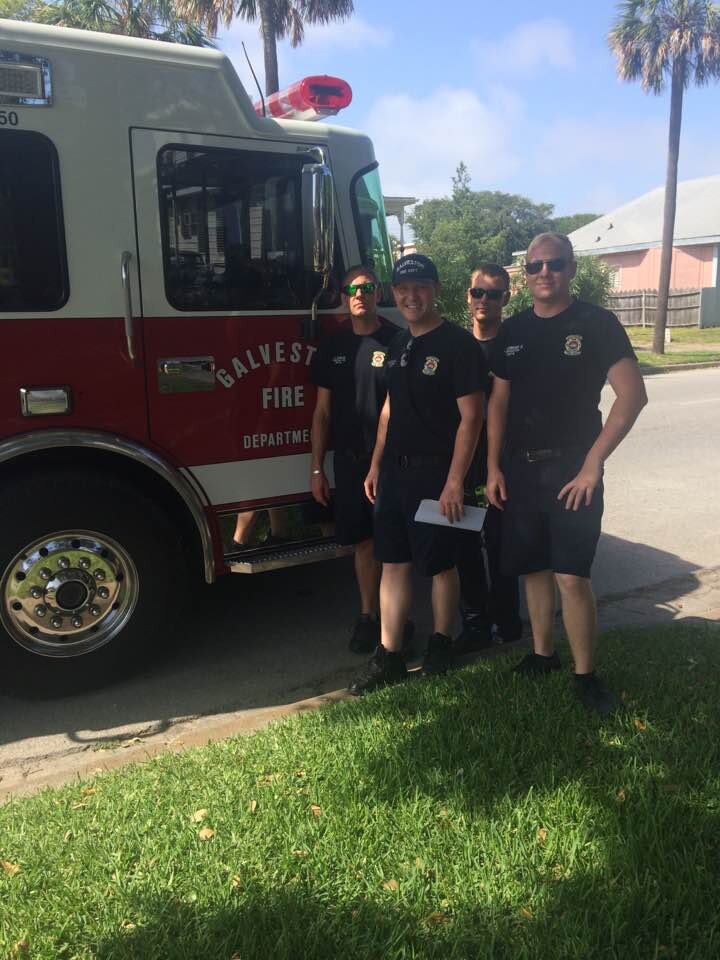Stewart Beach
Stewart Beach is Galveston’s premier family beach park. It is located where historic Broadway Avenue meets The Seawall.
Stewart Beach, like most places in Galveston, has a rich history that is wroth noting.
In the late 1930s, Galveston’s Mayor Brantley Harris was traveling along the Atlantic coast and saw large public beaches (like Jones Beach in New York). He became convinced that a similar destination could be created in Galveston. He envisioned the city attracting tourists and becoming the “Rivera of the Gulf.”
When he returned home, Mayor Harris persuaded the Galveston City Council to donate its portion of East Beach to the city. The city commission called an election for the authorization of the issuance of $175,000 in revenue bonds, and Robert Cummins, a Houston engineer and architect drew the plans. Donald Boyce, who had been the assistant manager of Jones Beach, was brought in to supervise the construction and to manage the park. The labor used to build Stewart Beach Park came from the President Franklin D. Roosevelt’s Works Progress Administration (WPA).
Stewart Beach was named for Maco Stewart, Sr., a Galveston resident and founder in 1893 of Stewart Title Company and whose family became one of the largest independent oil operators in Texas. His son, Maco Stewart, Jr., along with other community leaders (George Sealy and M.L. Moody III) were significant supporters of the Stewart Beach project.
Stewart Beach officially opened on July 18, 1941. It was dedicated by Mayor Harris,, and it was christened by his daughter, Margaret, who broke a bottle of water over the prow of the SS Stewart Beach. The attraction was built with a boardwalk, a building with a concession stand and restrooms and with cement slabs on either end of the boardwalk - one for dancing and one for roller skating. Additionally, there was a beach service office for renting umbrellas and chairs to the bathers.whose family became one of the largest
Today, Stewart Beach still offers plenty of amenities for visitors to enjoy a day at the beach, as well as regular supervision by highly trained lifeguards. Inside the park, there is a pavilion, restrooms and showers, and chair and umbrella rentals. Beach volleyball courts and a children’s playground are also there to enjoy.
Important to know, alcohol and glass containers are not permitted on Stewart Beach. Pets are welcome, but they must be kept on a leash.
For more information about Stewart Beach, visit www.galveston.com/.
-
2022
- Mar 17, 2022 Ivy Dishes
- Jan 29, 2022 Grace Episcopal Church
- Jan 1, 2022 100 Years
-
2021
- Aug 25, 2021 My Fig Tree
- Apr 28, 2021 Darlene's Shrimp
- Apr 24, 2021 Oleander Festival
- Feb 27, 2021 Great Winter Storm
- Feb 10, 2021 The Mourning Wave
-
2020
- Oct 26, 2020 Crepe Myrtles
- Sep 18, 2020 Trimming the Palms
- Jul 19, 2020 The Dancers
- Jul 11, 2020 Postcards
- Jun 20, 2020 Resilience Flag
- Jun 19, 2020 Juneteenth
- Jun 10, 2020 Silk Stocking
- May 27, 2020 Tree Sculptures
- May 6, 2020 Babe's Beach
- Apr 22, 2020 Opera House
- Mar 2, 2020 Texas Heroes Monument
- Feb 15, 2020 Mardi Gras Parade
- Jan 19, 2020 St. Joseph's Church
-
2019
- Dec 15, 2019 Celebrations
- Nov 6, 2019 Fresh Paint
- Oct 21, 2019 Jazz Age Series
- Oct 20, 2019 ARToberFEST
- Oct 6, 2019 Stingeree
- Oct 5, 2019 Pumpkin Time
- Oct 2, 2019 Sea Turtles
- Sep 29, 2019 Powhatan House
- Sep 24, 2019 The Dolphins
- Sep 5, 2019 Lucas Apartments
- Aug 24, 2019 Sandcastles
- Aug 9, 2019 The Daily News
- Jul 18, 2019 Beach Walk
- Jul 10, 2019 La King's
- May 25, 2019 Pleasure Pier
- May 1, 2019 Bolivar Ferry
- Mar 15, 2019 Saengerfest Park
- Jan 19, 2019 Moody Mansion
-
2018
- Dec 18, 2018 The Vintage Suitcase
- Dec 17, 2018 Festival of Lights
- Dec 2, 2018 Sunday Brunch
- Nov 21, 2018 Hendley Row
- Oct 27, 2018 Island Oktoberfest
- Sep 20, 2018 The Strand Clock
- Sep 16, 2018 St. Mary Cathedral
- Aug 11, 2018 No More Shed
- Jun 10, 2018 Rosenberg Library
- May 7, 2018 Stepping It Up
- May 3, 2018 A Happy Hour
- May 1, 2018 Ashton Villa
- Apr 21, 2018 96th Birthday
- Apr 1, 2018 Seawolf Park
- Mar 27, 2018 Ball High School
- Mar 15, 2018 East End
- Feb 1, 2018 Tremont House
- Jan 26, 2018 Menardi Gras
- Jan 24, 2018 Mardi Gras Decor
-
2017
- Dec 1, 2017 Miss Ruby
- Oct 8, 2017 Railroad Museum
- Oct 7, 2017 Tall Ship Elissa
- Sep 9, 2017 Star Drug Store
- Sep 8, 2017 1900 Storm Statue
- Aug 6, 2017 The Turquoise Table
- Aug 1, 2017 Bishop's Palace
- Jul 23, 2017 Garten-Verein
- Jul 21, 2017 Yard Work
- Jul 16, 2017 The Strand
- Jun 17, 2017 Stewart Beach
- Jun 7, 2017 The Original
- Jun 3, 2017 Murdochs
- May 27, 2017 Bryan Museum
- May 19, 2017 Firemen on Call
- May 13, 2017 Williams-Borden Neighborhood
- May 1, 2017 Oleander City
- Apr 28, 2017 God Winks







